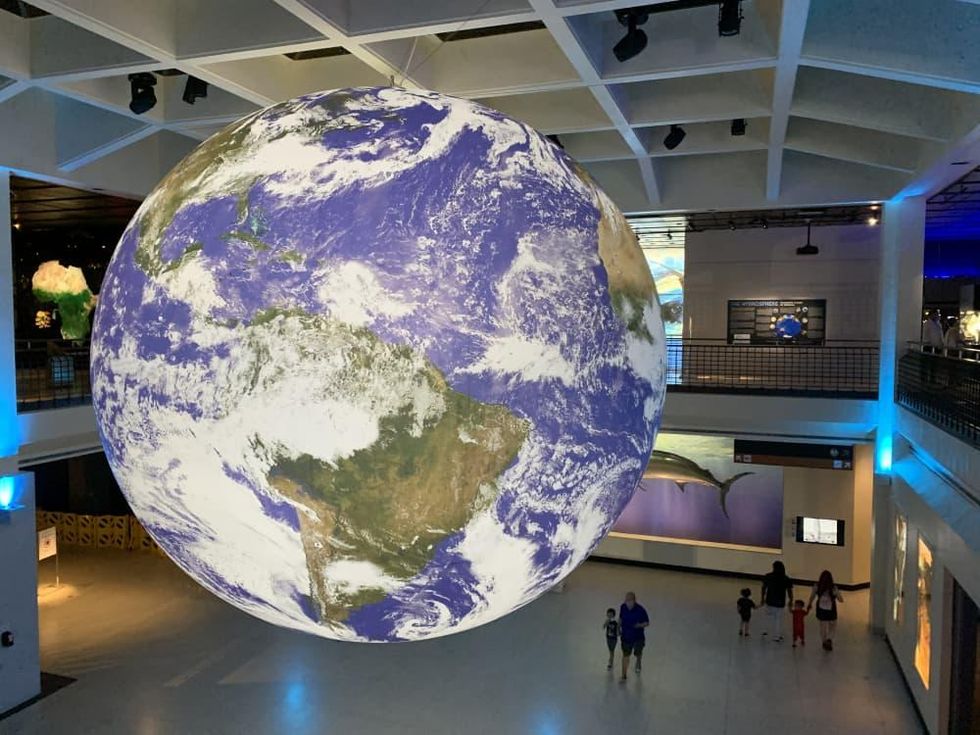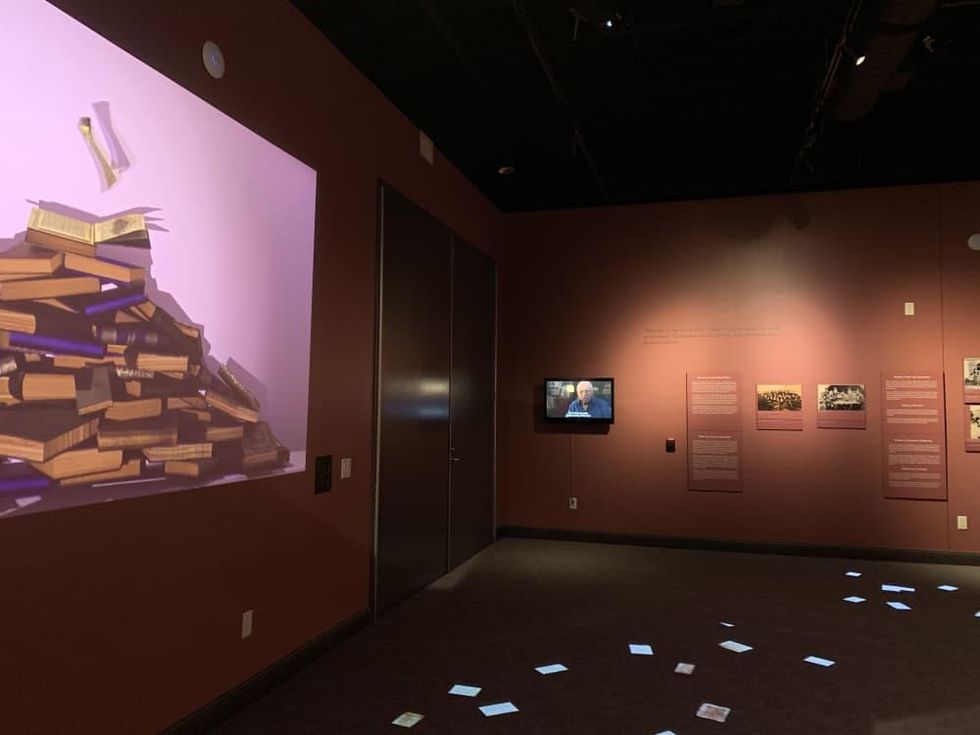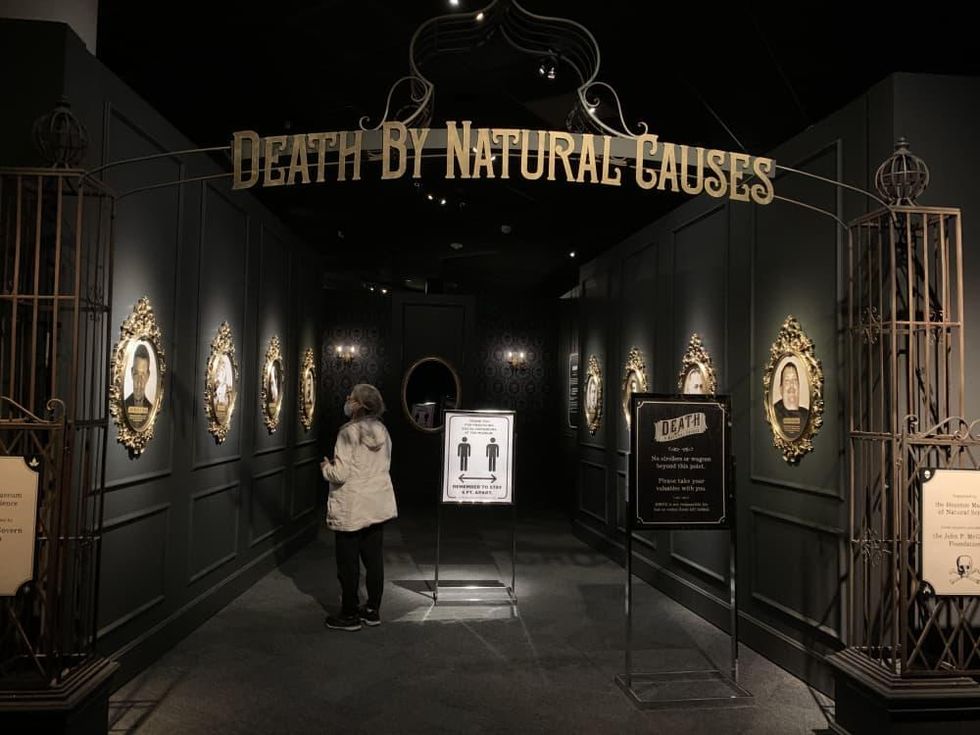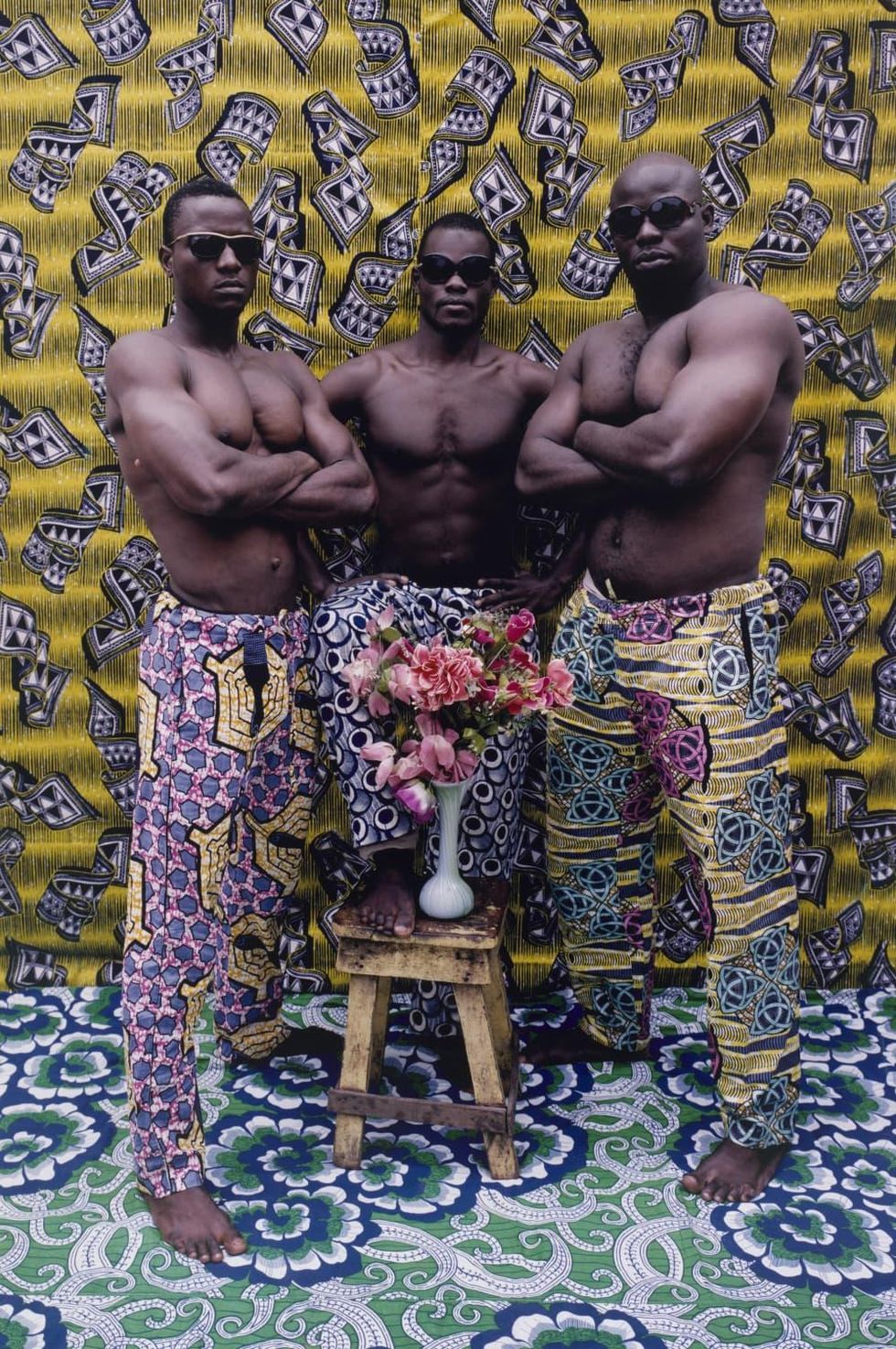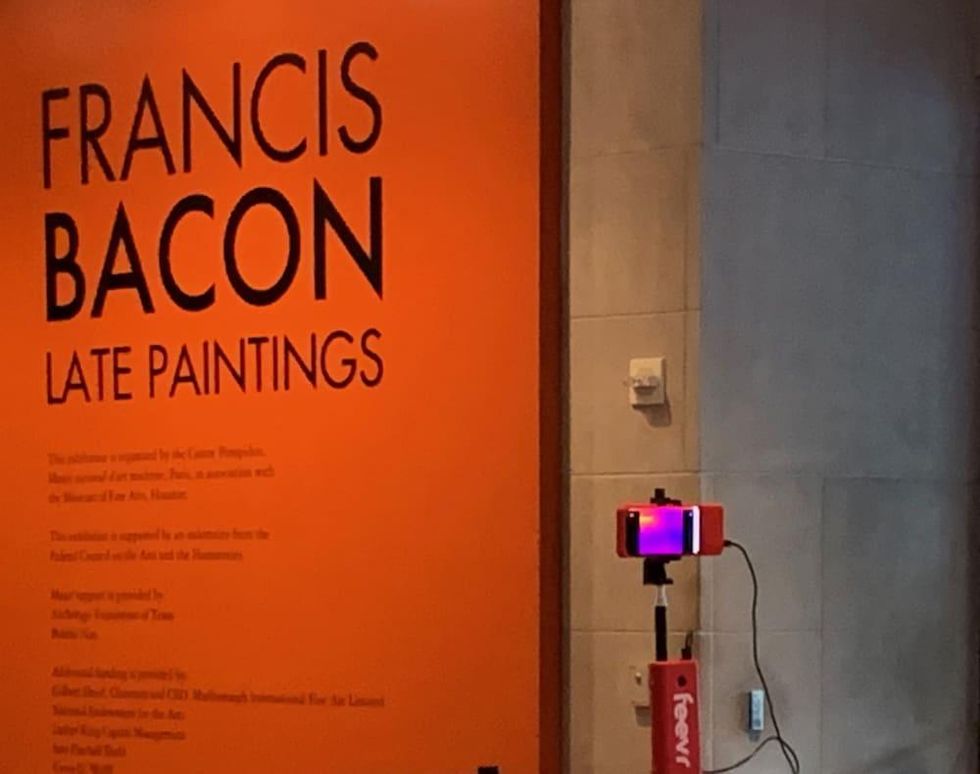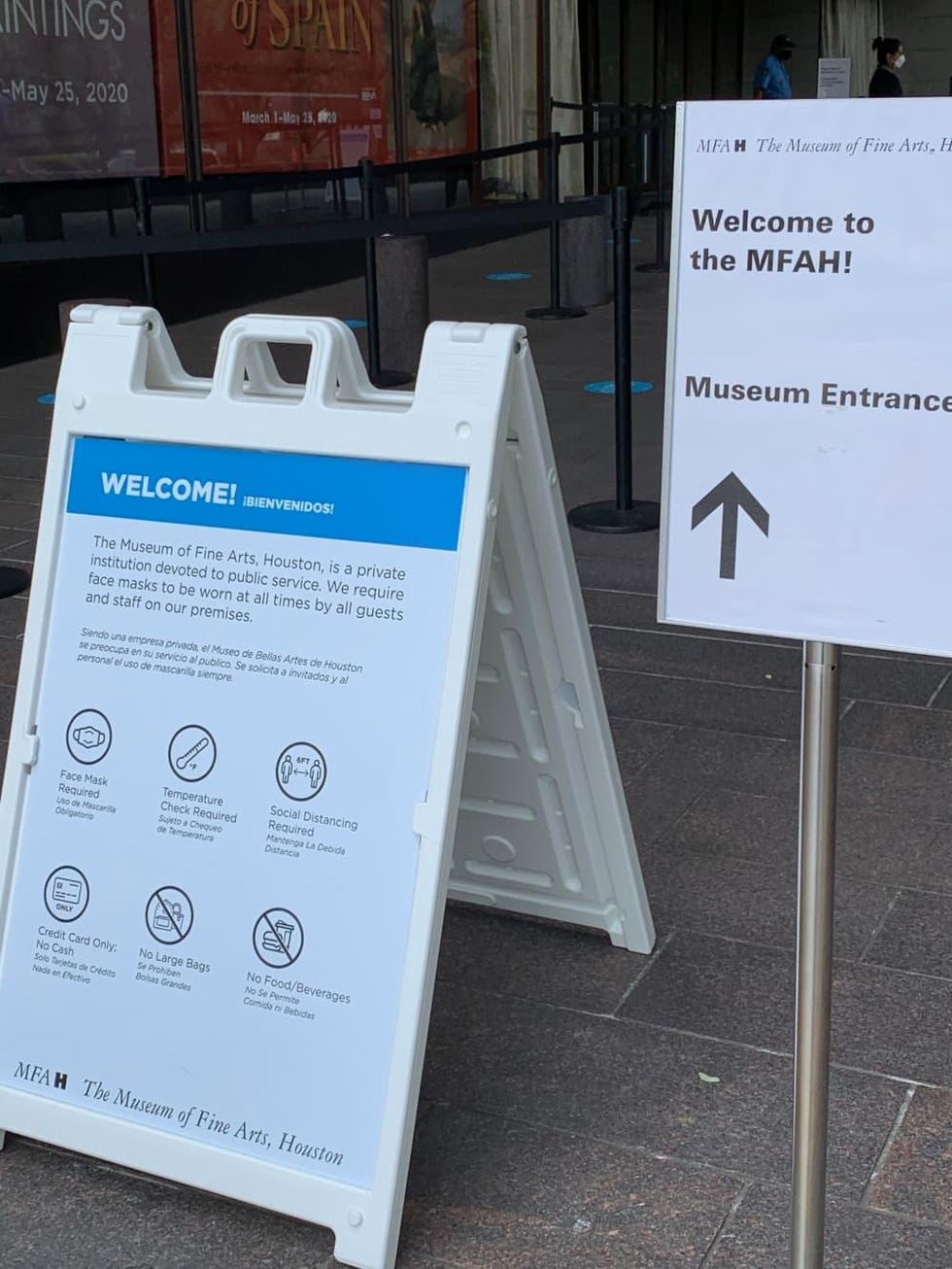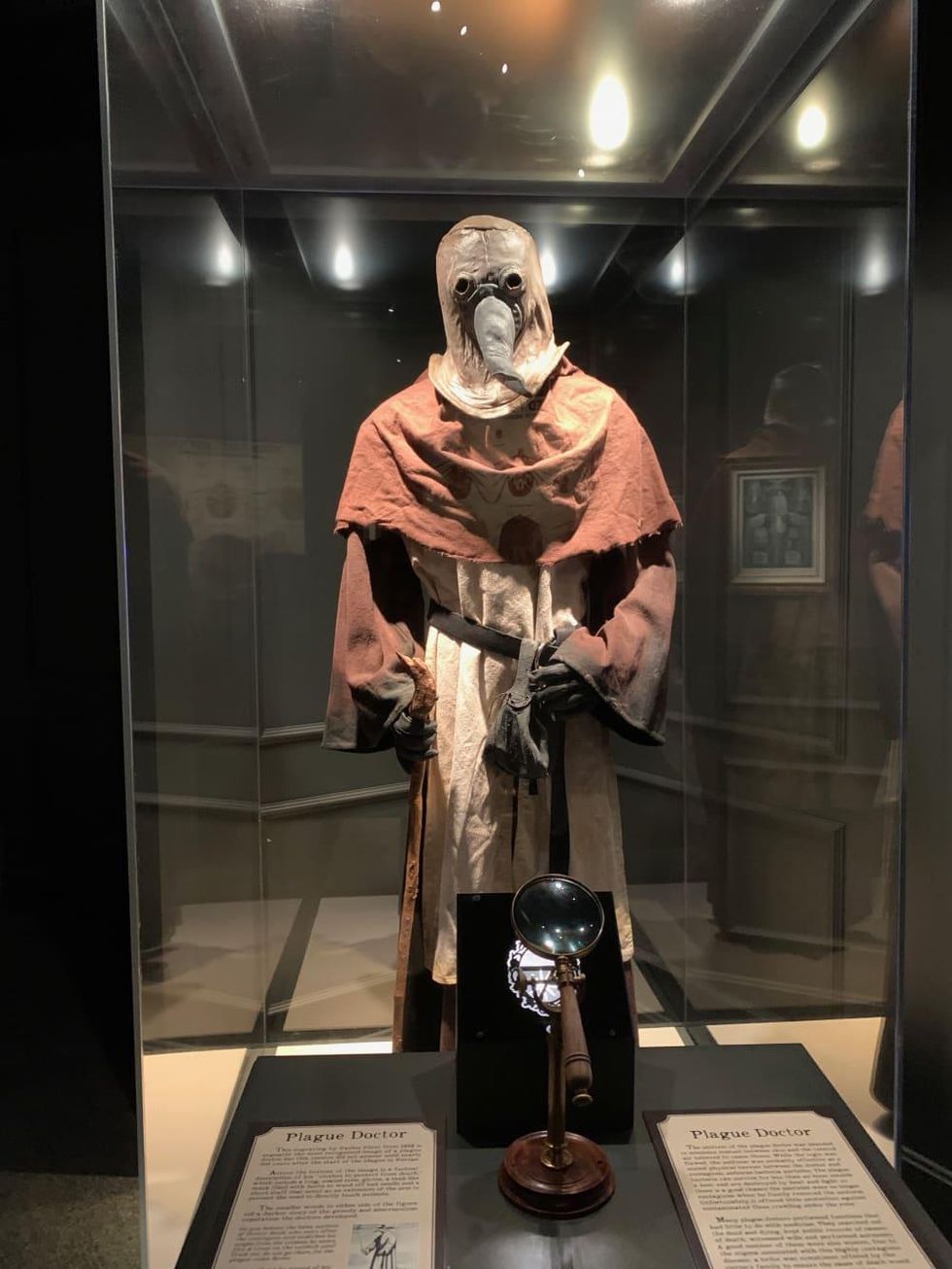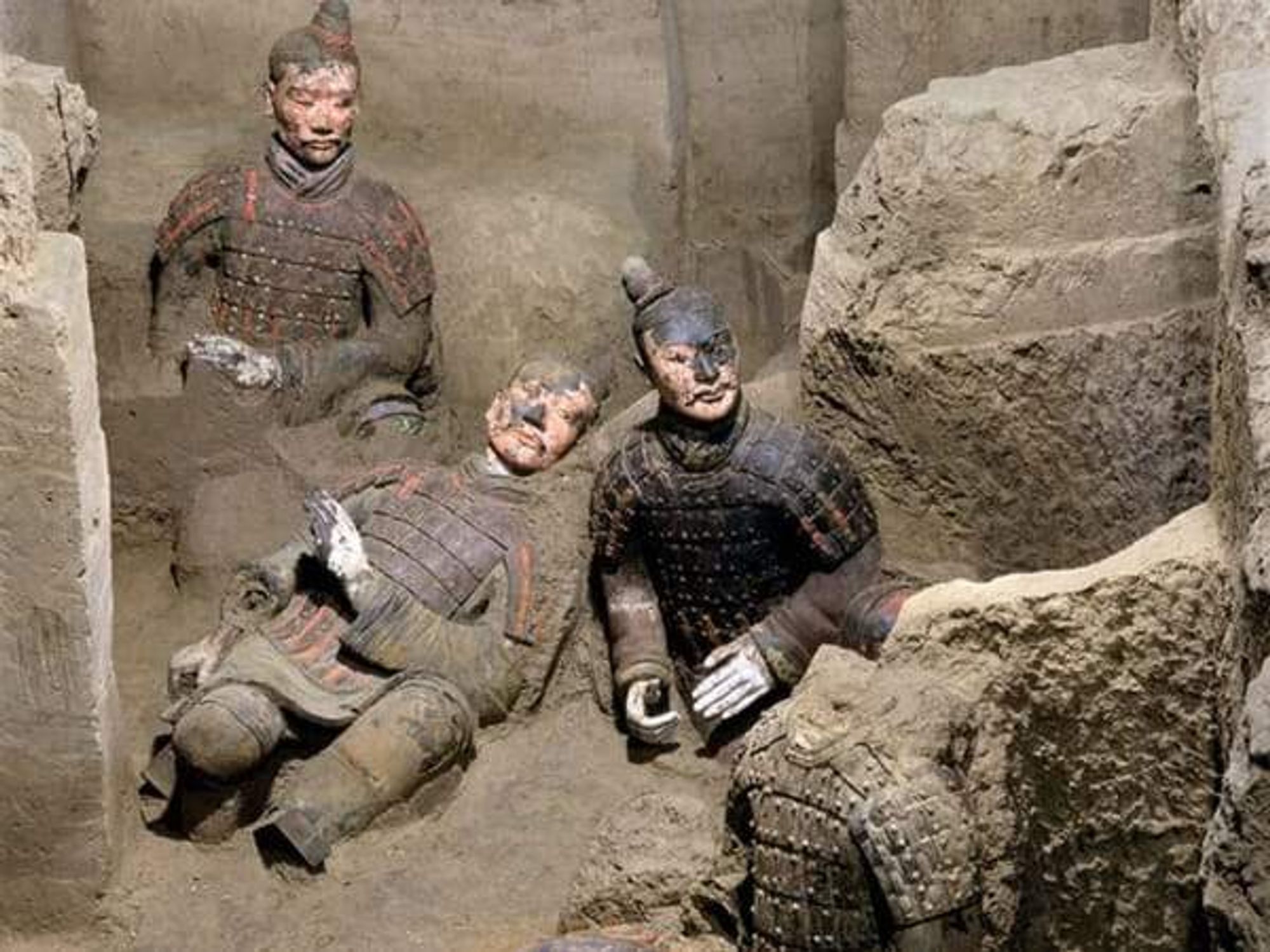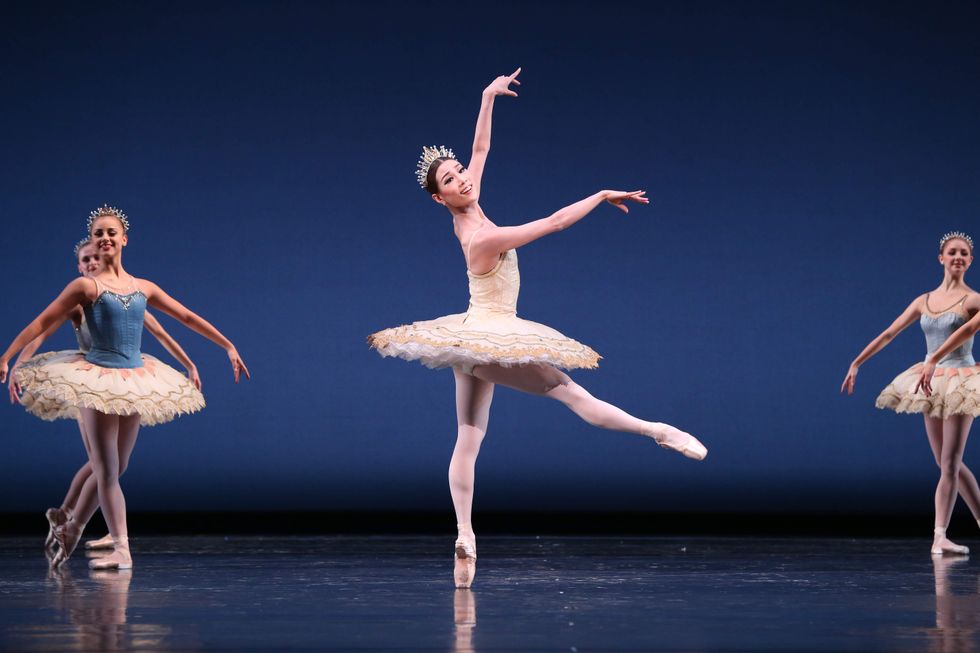back to the museum
Here's what to expect when you visit Houston's newly reopened museums
Houston made national cultural news in May as a few of our museums became some of the first in the world to reopen. Knowing that everyone has their own level of comfort for going out and about now, each institution that has reopened or announced a date has done so with detailed safety plans.
Taking a look at those policies, I found my own personal comfort level solidly on. As the days get longer and hotter, summer trips to the Houston’s Museum District have become a body and mind cooling ritual for me over the years, and this June, I felt more than ever in need of some art, science, and cultural therapy to keep me going.
Over a week's period, I ventured forth into the Houston Museum of Natural Science, the Holocaust Museum Houston, and the Museum of Fine Arts, Houston, and now return to tell the tale. So if you’re thinking about a journey into the District now that the Zoo, Asia Society and Children’s Museum are reopening, here’s a preview of what to expect.
Into the cool
Both the MFAH and HMNS usually have multiple ways to get inside, but now a few greeters stand outside to welcome people and point to one consolidated entrance. The museums have put signage and rope line dividers in place to help guests socially distance, but I walked right up to all museums without a wait. Every museum advises reserving tickets online, but it’s still possible to purchase passes when arriving.
Once inside, everyone must wear a mask. I found hand sanitizer stations throughout the buildings, and the museums are engaging in frequent disinfection of high touch areas like door handles, elevators and restrooms. The MFAH additionally requires visitors to stand in front of a temperature monitor for a few seconds before proceeding. Looking a little like a phone on a tripod the scanner felt about as invasive as taking a selfie.
The MFAH and HMNS both have special exhibitions that require showing an additional ticket at that gallery entrance, but otherwise, once I went through the initial low-contact procedures, I became a masked woman free to roam these culturally, near-sacred-to-me, spaces.
All the museums are keeping an eye on capacity with staff members on hand to make sure no gallery fills up past the 25-percent capacity. I went on two Thursdays, which are free days for the MFAH and HMH and free evenings at the HMNS, and found less people in the several hours than I would on a 20 minute trip through the grocery store.
New sights and insights
A few exhibitions at each museum opened right before the Texas shutdown, so the visits allowed me a chance for a look at some new shows and a deeper exploration of some fascinating collections and installations I had only seen once or twice.
Walking into the Alfred C. Glassell Hall of the HMNS to find the Earth hovering above me made me a little teary eyed. In the best of summers, Luke Jerram’s installation Gaia – Earth likely calls to viewers’ sense of universal humanity, but in these troubled times I wondered if I should think of myself in terms of being a fellow Earthling organism.
After a mediative walk around Gaia, it felt appropriate to dive into the State of Water: Our Most Valuable Resource, an exhibition of 33 photographs from Brad Temkin’s book The State of Water. The works give unique view of the relationship between large cities’ and the water that nourishes them.
I admittedly sometimes have an inappropriate sense of the macabre, somehow exacerbated this year, so I couldn’t help but bury myself in the exhibition Death By Natural Causes (through January 3, 2021). With mask firmly covering my nose and mouth and distancing from the few other people in the exhibition, I found myself positively delighted by all the ways Gaia finds to kill us from falling coconuts to Amanita mushrooms to radioactive Fiestaware to the bubonic plague. Live Gila Monster included.
So many traveling museum shows had to harbored in whatever city across the world they landed in February or March. But a possible silver lining for the MFAH means the epic exhibition The Glory of Glory of Spain: Treasures from the Hispanic Society Museum & Library will remain until early 2021. I'll be returning to this one throughout the summer.
Another art loss of the COVID closings was many of the shows for the FotoFest Biennial so catching the affiliated exhibition, Through an African Lens: Sub-Saharan Photography from the Museum’s Collection was a must. The fascinating look at the everyday extraordinary lives in sub-Saharan Africa from the 1950s to today also celebrates the artists behind the lens.
Later at the HMH, I had to follow the projected books into The Book Smugglers: Partisans, Poets, and the Race to Save Jewish Treasures from the Nazis introduces us to the “Paper Brigade,” Jewish intellectuals, activists and writers, who risked their lives to save cultural treasures in Vilna, Lithuania during WWII.
Missed pieces
One irony of so many museums and cultural institutions taking their educational information virtual is that as they open, those with major interactive displays that give visitors agency as to how they navigate through that information have to shut those down for the time being for safety considerations.
While this wasn’t as much of a problem at the MFAH, it did mean that at the HMH the poignant and heart-changing And Still I Write: Young Diarists on War and Genocide exhibition had to close completely since it involves many touchscreens to explore the diaries.
While the bright lights of the HMNS’s Wiess Energy Hall 3.0 continued to flash, several of the educational displays remain dark and the fun and informative EFX 3000 and Geovator simulator rides were closed. However, the spacey (city) lights of the 3D model, plus animation experience known as Energy City never went down, and I found a few socially distancing people sitting on the benches to watch the full half hour energy presentation.
Cherishing what remains
The Lester and Sue Smith Human Rights Gallery at the HMH seemed to call out to me with renewed urgency during my visit. Giving some of the history of human rights struggles, the gallery also allows for some much needed quiet contemplation before experiencing the Call to Action exhibit within the larger gallery.
And while I usually head over to the MFAH for every new and traveling blockbuster exhibition, this trip I wanted to visit old (some ancient) and lovely friends, the galleries housing the MFAH's permanent collections. Oh, how I’ve missed tripping through The Light Inside, the fantastic James Turrell tunnel between the Beck and Law Buildings.
Wandering through the many galleries holding the museum’s vast collections of European, Americas, Asian, and Oceanic art spread throughout the Sarofim Campus felt like walking through time, renewing my beliefs that art survives as bits of human patterns and creation amid the swirl of history.
While all the museums continue to produce innovative and educational virtual experiences for those staying home, when you’re ready, these Houston treasures once again welcome us back to our city’s cultural houses.
